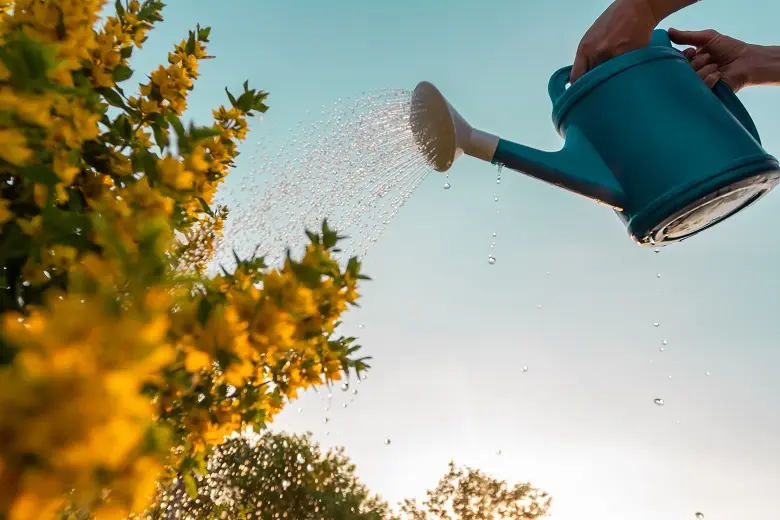- The driest July since 1885, the hottest temperatures on record, and the River Thames reaching its lowest level since 2005 have led to a drop in reservoir levels in the Thames Valley and London
Thames Water’s robust drought plan is designed to mitigate the risk of further impact to water resources and ensure the taps keep running for customers’ essential use - Thames Water is fixing over 1,100 leaks on its 20,000-mile network every week and has met its leakage reduction targets for the past three years
- In addition to the large leakage reductions, it is estimated a Temporary Use Ban will help save up to a further 10% of water
Due to unprecedented weather conditions, including the driest July in 135 years and the hottest recorded temperatures since 1885, Thames Water today confirmed that the Temporary Use Ban (TUB) will come into effect across London and the Thames Valley at 00:01 BST, 24 August 2022.
Domestic customers should not use hosepipes for cleaning cars, watering gardens or allotments, filling paddling pools and swimming pools and cleaning windows.
The recent heatwave and extreme temperatures have resulted in the highest demand for over 25 years with the company supplying 2.9 billion litres of water a day to customers across the region1. In some areas during the particularly hot weather, demand for water rose by 50% compared to the norm for the time of year.
With no prospect of significant rain forecast by the Met Office, Thames Water has already taken a number of measures to boost its water resources. This includes work to reduce leaks and implementing a media campaign to encourage customers to use less water2. However, the rapid escalation of the situation means the water company must now implement stage two of its drought plan which includes hosepipe restrictions.
Groundwater levels are currently below normal throughout the region and declining towards levels that would be only be expected once a decade. Reservoir storage levels in London and Farmoor, in Oxfordshire, have reduced significantly and are now at levels not seen for around 30 years. Alongside a significant leakage reduction programme, Thames Water is drawing 120 million litres of groundwater from its North London Aquifer Recharge System (NLARS) to top-up the water stored in our reservoirs.
While the TUB does not cover businesses, Thames Water is asking businesses across its area to be mindful of the drought and to use water wisely, for example, by not washing commercial vehicles or turning off water features on their properties.
Sarah Bentley, Thames Water CEO said: “Implementing a Temporary Use Ban for our customers has been a very difficult decision to make and one which we have not taken lightly. After months of below average rainfall and the recent extreme temperatures in July and August, water resources in our region are depleted. Despite investing in the largest leakage reduction programme in the UK, customer demand is at unprecedented levels and we now have to move into the next phase of our drought plan to conserve water, mitigate further risk and futureproof supplies.
“I’d like to thank all of our customers for the efforts they have already made to conserve water as a result of the media campaign we have been running since May. Reducing demand means reducing the amount of water we have to take from the environment at a time when it is under pressure. I would also like to apologise to our customers who have been affected by recent incidents, our dedicated colleagues are working around the clock to manage this challenging situation.”
Sarah who joined the company towards the end of 2020, launched an 8-year Turnaround plan in May 2021 to begin reversing years of under-performance. The plan has three pillars: fix the basics, raise the bar and shape the future.
Fixing leaks is a cornerstone of the plan. Over the past three years the company has reduced leakage by over 10 per cent, meeting the target set by its regulator Ofwat. It currently has 440 dedicated teams working around the clock to find and fix over 1100 leaks a week. In the next 3 years, Thames Water will spend over £55million to further help reduce leakage and £200million replacing water mains.
Work by the National Infrastructure Commission has suggested that the UK is likely to need 4 billion litres more water every day by 2050. For Thames Water this would mean at least 1 billion litres more water every day, compared to the current average of 2.6 billion litres put into supply every day.
Thames Water estimates 150 litres of water are used per person every day, reducing daily demand to closer to 100 litres is crucial alongside fixing leaks. In the longer term, as part of its water resources management plan, Thames Water, working with its regulators and the water industry, is also looking at options to secure future water supplies. This includes options for water transfers from areas around the country from areas where it is abundant to areas where it is scarce as well as further storage options so that water can be collected at times of plenty for use during drier times of year when demand is higher.
For more information, please see www.thameswater.co.uk/water-restrictions
- During a typical summer, when there isn’t a heatwave, Thames Water normally supplies up to 2.7 billion litres of water a day to 10 million customers in its region.
- In May, in line with its drought plan, Thames Water launched the first phase of its media campaign urging customers to use water efficiently, this was followed up in July with a second phase providing customers with lots of water saving tips.
Read more Thames Water Articles and News on H2O Global News. Do you have an article or video that you would like to contribute? Submit your contribution here or keep up with the latest news from the water industry and wastewater industry by subscribing to our weekly newsletter







